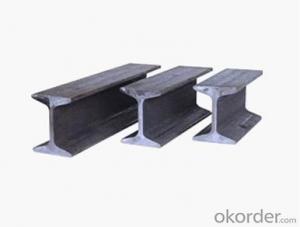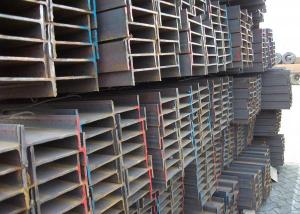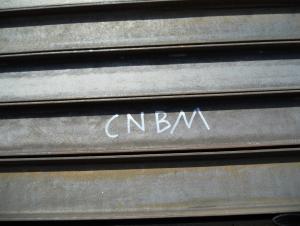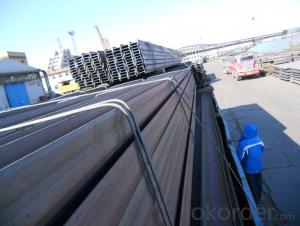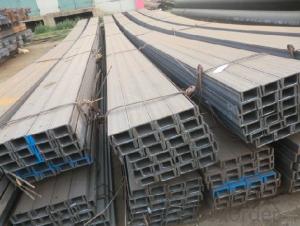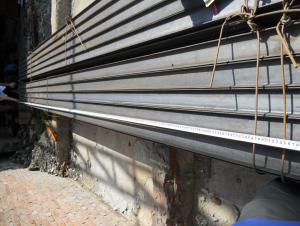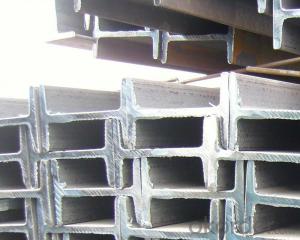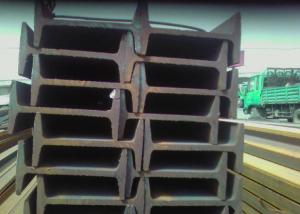Stainless Steel I Beam/I Beam Steel 2015 New Competitive
- Loading Port:
- Nanjing
- Payment Terms:
- TT OR LC
- Min Order Qty:
- 4000 PCS
- Supply Capability:
- 30000 PCS/month
OKorder Service Pledge
Quality Product, Order Online Tracking, Timely Delivery
OKorder Financial Service
Credit Rating, Credit Services, Credit Purchasing
You Might Also Like
2015 New Competitive Stainless Steel I Beam Details
| Leg Height: | 68-180mm | Depth: | 100-500mm | Standard: | BS,JIS,ASTM,DIN,EN,GB,AISI |
| Grade: | A36 - A572 | Place of Origin: | China (Mainland) | Brand Name: | Pangang |
| Model Number: | Q235 | Application: | Construction | Surface: | Smoonth |
Packaging & Delivery
| Packaging Detail: | According To Export's Demand Or Customer's Requires |
| Delivery Detail: | In 10 -20 days |
Product Basic Information:
| Material | Q195,Q235,Q345, Grade D,SS400,S235JR,1.0038,304,316,316L,201,202,410,420,ETC |
| Standards | GB/T 13793-1992 ,ASTM,JIS,EN 10025 ETC |
| Origin place | Made In China |
| Delivery Condition | Hot rolled |
| Surface require | Black,Hot Dipped Galvanization,Polish |
| Packing | 1.Seaworthy Packing 2.Wooden Case 3.Carton,Woven Bag Or At Client's Requires |
| Delivery time | In 10-30 days |
| Trade Term | EXW,FOB,CIF |
| Payments | T/T or L/C at sight |
| Port | China main Port,such as shanghai,Dalian,Shenzhen port. |
| MOQ | 1 Ton |
| Product Advantages | 1.Very Fast Delivery Time 2.High Quality And Reasonable Price 3.Sizes Are Enough 4.Many In stocks In warehouse 5.Provide The Sample For Free |
2015 New Competitive Stainless Steel I Beam Pictures
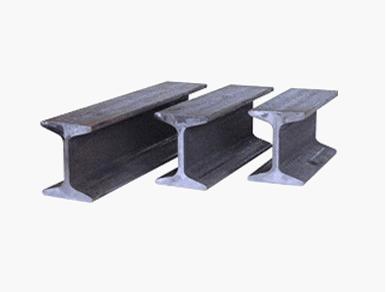
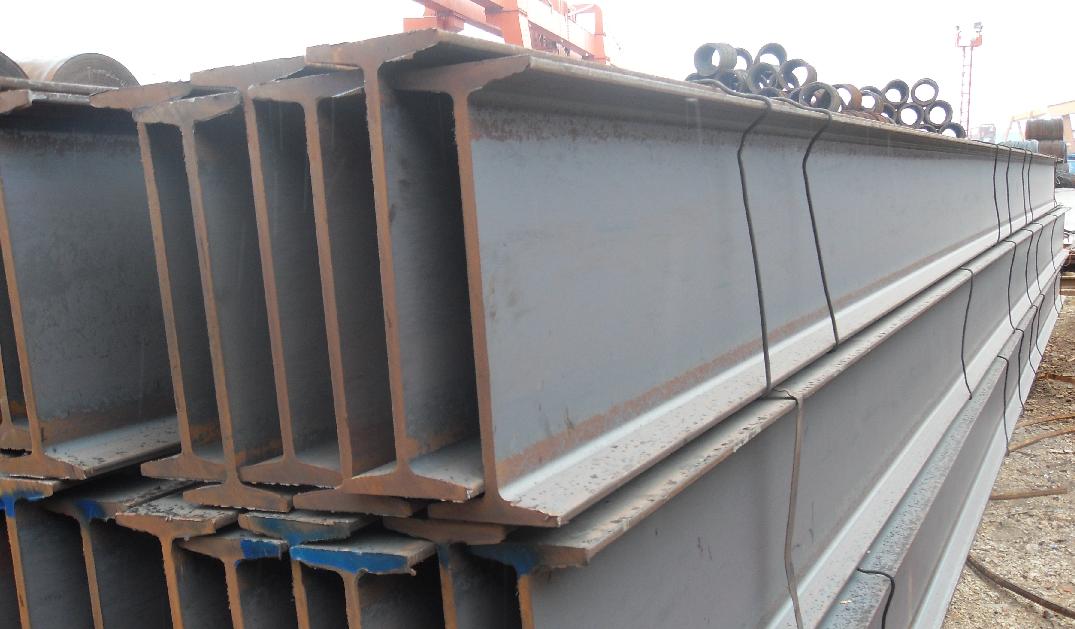
- Q: What is the weight of a steel I-beam?
- The weight of a steel I-beam can vary depending on its dimensions and the specific type of steel used. Generally, the weight of a steel I-beam is calculated by multiplying its cross-sectional area by the density of steel. The cross-sectional area is determined by the height, width, and thickness of the beam. To provide a more specific answer, the weight of a steel I-beam can range from a few hundred pounds to several thousand pounds, depending on its size. For example, a 10-foot long I-beam with a height of 4 inches, width of 6 inches, and thickness of 0.25 inches may weigh around 31 pounds per foot, resulting in a total weight of approximately 310 pounds. It is important to note that these calculations are just estimates, and the actual weight of a steel I-beam should be confirmed with the manufacturer or through reference to engineering tables.
- Q: How long do steel I-beams typically last?
- Steel I-beams typically have a lifespan of 50 to 100 years, depending on various factors such as maintenance, exposure to environmental conditions, and usage.
- Q: How much is the load-bearing capacity of No. 10 I-beam per metre?
- The span of I-beam is different, and the bearing capacity is different.The following are the spans of 10# channel steel bearing drawings with a weight of 1kgf/m=10N/M=1 kg / m.
- Q: What are the environmental implications of using steel I-beams in construction?
- The use of steel I-beams in construction has both positive and negative environmental implications. On the positive side, steel is a highly durable and strong material, which allows for the construction of long-lasting and sturdy buildings. Moreover, steel is recyclable, reducing the need for new production and minimizing waste. However, the production of steel I-beams requires a significant amount of energy and emits greenhouse gases, contributing to climate change. Additionally, the extraction of iron ore and the mining of other materials used in steel production can have adverse environmental impacts, including habitat destruction and water pollution. Therefore, while steel I-beams offer structural advantages, it is crucial to consider their environmental footprint and explore sustainable alternatives whenever possible.
- Q: What is the difference between I-beam and H steel?
- H steel is widely used in steel structure construction. It has many differences comparing with i-beam. The first is the flange, followed by the inner edge of the flange without tilting, parallel to the upper and lower surfaces. The section characteristics of H steel are obviously better than those of traditional I-beam, channel steel and angle steel.H section steel is a kind of economical section high efficiency profile with more optimized sectional area distribution and stronger weight ratio. It is named after the English letter "H". The two outer sections of the H steel have no inclination, and they are straight. This makes the welding of H steel more simple than that of I-beam, the mechanical performance of unit weight is better, and it can save a great deal of material and construction time.The I-beam section is well pressed and resistant to pulling, but the section size is too narrow to resist torsion. H steel, on the other hand, has its advantages and disadvantages.
- Q: Can steel I-beams be used for industrial machinery?
- Absolutely, industrial machinery can indeed utilize steel I-beams. Renowned for their robustness and resilience, steel I-beams prove themselves versatile in a multitude of industrial applications. With their exceptional structural integrity and capacity to bear heavy loads, they excel at providing unwavering support for hefty machinery and equipment. Furthermore, their ability to endure immense pressure and furnish a steadfast and secure framework renders them a preferred choice in factories, production facilities, and other industrial environments necessitating sturdy support structures.
- Q: Can steel I-beams be used for educational institutions?
- Yes, steel I-beams can be used for educational institutions. Steel I-beams are commonly used in construction due to their strength, durability, and load-bearing capabilities. They provide structural support, especially in large buildings or areas with wide spans, making them suitable for educational institutions such as schools, colleges, and universities. Steel I-beams can be used in various applications within educational institutions. They are commonly used in the construction of gymnasiums, auditoriums, libraries, and other large spaces that require open floor plans and high ceilings. The strength of steel I-beams allows for the creation of large, open spaces without the need for excessive columns or support structures. In addition, steel I-beams can also be used in the construction of classrooms, laboratories, and other educational facilities. They provide the necessary structural support for the building while allowing for flexibility in the layout and design of the interior spaces. Steel I-beams can be easily integrated with other construction materials, such as concrete or wood, to create a safe and functional learning environment. Furthermore, steel I-beams offer several advantages for educational institutions. They are fire-resistant and can withstand extreme weather conditions, providing a safe and secure environment for students and staff. Steel is also a sustainable and environmentally friendly material, as it can be recycled and reused. This aligns with the increasing focus on sustainability and green building practices in educational institutions. Overall, steel I-beams are a viable option for the construction of educational institutions. Their strength, durability, and versatility make them suitable for a wide range of applications within these facilities.
- Q: How do steel I-beams contribute to the overall durability and longevity of a structure?
- Steel I-beams contribute to the overall durability and longevity of a structure due to their high strength-to-weight ratio and resistance to bending and deflection. These beams provide structural support by distributing the weight of the load evenly, minimizing the risk of structural failure and collapse. Additionally, their ability to withstand extreme weather conditions, corrosion, and fire makes them highly durable, ensuring the longevity of the structure.
- Q: Can steel I-beams be used for manufacturing plants?
- Indeed, manufacturing plants can utilize steel I-beams. These beams are extensively employed in the construction field owing to their remarkable strength-to-weight ratio and adaptability. They offer exceptional structural reinforcement, capable of enduring substantial burdens, which renders them perfect for deployment in manufacturing plants where heavy machinery and equipment are prevalent. Moreover, steel I-beams boast long-lasting sturdiness, as they are impervious to corrosion and capable of withstanding harsh environmental circumstances. Furthermore, their straightforward installation process and potential for customization to meet specific project demands contribute to their widespread popularity in manufacturing plants.
- Q: What are the design considerations for steel I-beams in high-snow load areas?
- Design considerations for steel I-beams in high-snow load areas typically include the selection of appropriate beam sizes, reinforcement, and connection details to ensure structural stability and safety under the weight and movement of heavy snow loads. Factors such as the snow load intensity, duration, and distribution, as well as the building's location and usage, are taken into account. Additional considerations may involve the use of protective coatings to prevent corrosion, proper drainage systems to avoid water buildup, and adequate insulation to minimize heat transfer and snow melting. Overall, the design aims to ensure the I-beams can withstand the anticipated snow loads while maintaining their structural integrity.
Send your message to us
Stainless Steel I Beam/I Beam Steel 2015 New Competitive
- Loading Port:
- Nanjing
- Payment Terms:
- TT OR LC
- Min Order Qty:
- 4000 PCS
- Supply Capability:
- 30000 PCS/month
OKorder Service Pledge
Quality Product, Order Online Tracking, Timely Delivery
OKorder Financial Service
Credit Rating, Credit Services, Credit Purchasing
Similar products
Hot products
Hot Searches
Related keywords
